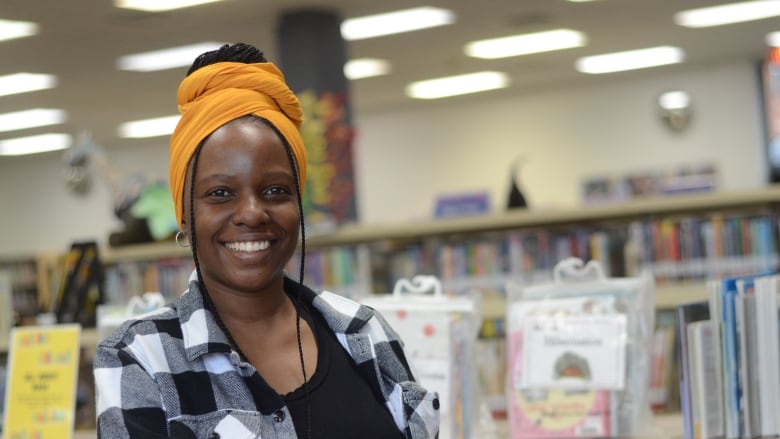How long it takes to piece together a collage is hard to pinpoint for London artist Tafadzwa Maposa.
“It’s quite a process,” she said. It takes up to six hours to find images — and up to 10 hours to cut and arrange them together.
But with scissors, glue and paper in hand, Maposa finds “little pockets of time” to explore the ordinary lives of Black people in her art, a genre she said is missing from much of Western art history.
Her work is a way to “repaint history” and represent Black people in ways that are “more reflective of who we are.” In Western art history, she said Black people were often shown either infantilized, exoticized or unnamed in the background.
Maposa, who also goes by Taffy, is speaking at the London Public Library’s Meet the Artist monthly series on Saturday. Her collages — focused on themes of identity, beauty and family — are on display at the library’s Central branch at 251 Dundas Street through February as part of Black History Month events across the city.

She first began collaging last January to honour the history of the Fugitive Slave Chapel, a London landmark built in 1848 that served as a refuge on the underground railroad. Her piece, The Mothers on Their Way to the Chapel, was selected for the 20th anniversary of Black history month in the city last year.
Showing the humanity of Black people in her art is a priority as she mixes with photographs, vibrant colours, and African prints.
Collage is a way to take something apart and make something new, she said.

“The process itself kind of reflects this history that Black people have had of having to just make do with what we have.”
The process is also therapeutic, she said.
“It’s a way to deal with some of the trauma, some of the racialized trauma that we go through… to question things and to really delve into it in a way that is constructive.”
Maposa’s life and identity inspire her work
Maposa was born in Zimbabwe eight years after the country’s independence, so she’s part of the “born-free” generation. Her family moved to the U.S. before settling in Canada when she was 19.
She studied art at Fanshawe College and Western University before becoming a library assistant at the London Public Library.

In Zimbabwe, her grandparents were sharecroppers, also called tenant farmers. They were given cattle and land but were forced to stay and farm or find a way to escape, she said.
“That’s just one example of kind of how my identity inspires the work. But the biggest thing is just like finding these connections among the African diaspora,” she said.
Another piece, Hand Game, portrays two girls playing a hand game, a nostalgic memory from her childhood in Zimbabwe. In this piece, she explores the “ordinary lives of black girls” in a visual way.

“I just wanted to focus on black representation because it’s been lacking for so long,” Maposa said. “A lot of Black artists, we’ve kind of taken it upon ourselves to correct that representation.”
Maposa will discuss her art process and influences at the Central Library on Saturday, Feb. 11, at 2:30 p.m. Her exhibit can be seen on the third floor until Feb. 28.
